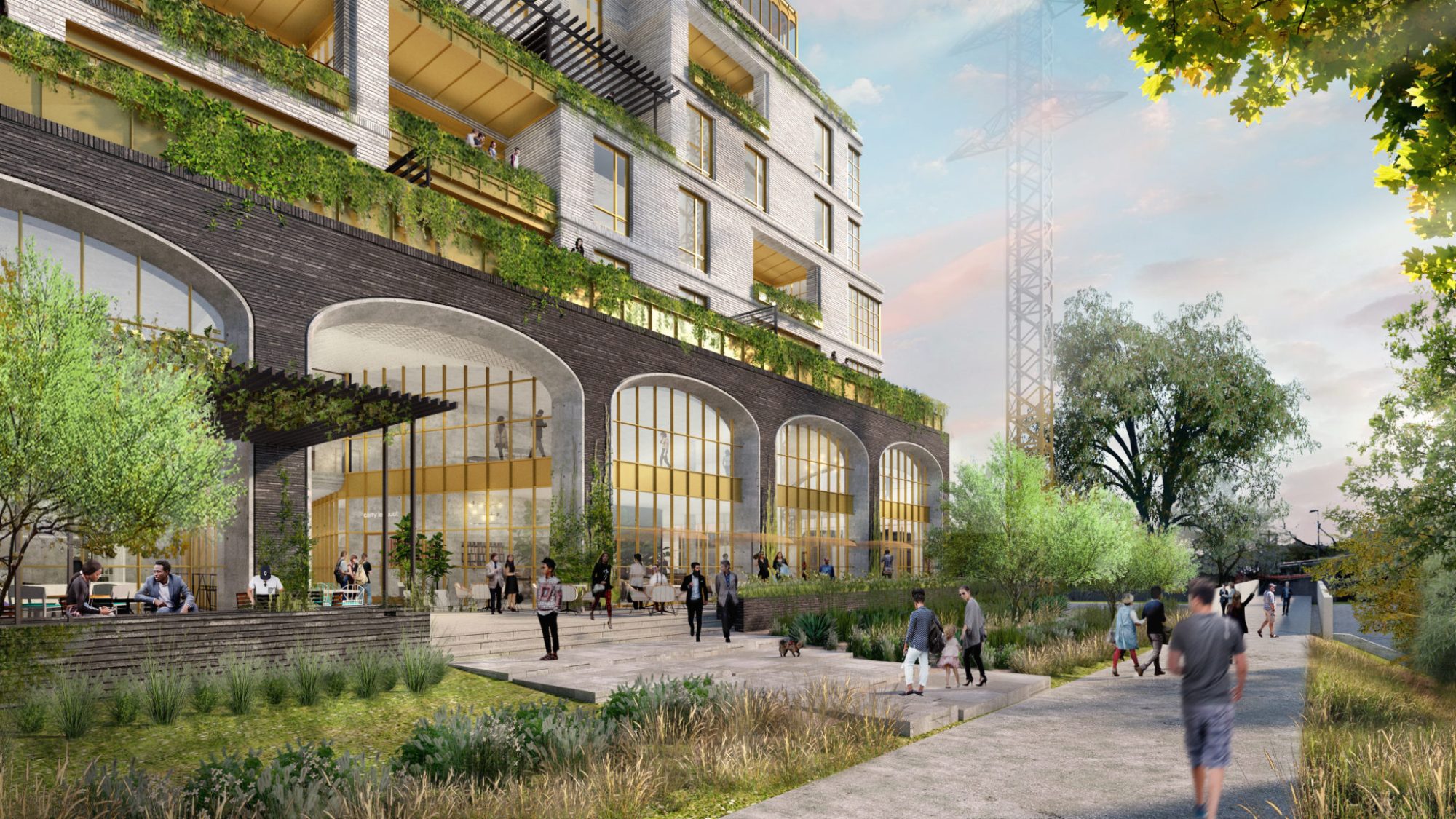“Whether people are healthy or not, is determined by their circumstances and environment. To a large extent, factors such as where we live, the state of our environment, genetics, our income and education level, and our relationships with friends and family all have considerable impacts on health, whereas the more commonly considered factors such as access and use of health care services often have less of an impact.”
– World Health Organization, Health Impact Assessment
On an average day, a typical American will spend approximately 90 percent of the day indoors. During this time, we are influenced by a variety of factors in our environment such as the surrounding air, water, food, lighting, acoustics, temperature, materials, and other people – All of which have an impact on our physical and mental health.
As design professionals, we play a key role in developing our built environment, so we also have the responsibility to understand these interactions to support the future health and well-being of ourselves and our society. In the words of Stan Lee, “With Great Power Comes Great Responsibility.”
Thankfully for us, rating systems such as LEED, WELL, and Fitwel provide frameworks on how to create spaces which promote occupant health and well-being through results-based design strategies. By designing with these frameworks in mind, we introduce “Green Buildings” into the built environment, promoting a global movement that is dedicated to creating better places for both people and the environment.

Do We Really Need Green Buildings? Can’t I Just Eat Healthy and Exercise?
According to OECD data, the U.S. far surpasses any other country when it comes to Healthcare Spending (both as a % of GDP and per Capita). However, despite our #1 ranking in healthcare spending, we aren’t a top performing country when it comes to citizen health. In fact, we’re not even close. According to the most recently available OECD data, the U.S. ranks 28th in Global Life Expectancy and 33rd in infant mortality.
So, what are we leaving out of consideration? Are there important factors to human health that we are largely ignoring?
As a country, we place most of our focus on health care services and an individual’s lifestyle choices. For example: diet, exercise, and smoking habits. Although these are important factors to human health, there are several other areas of focus that contribute to our health and well-being. For example, the World Health Organization recognizes the following as major determinants of health:

- Physical Environment – Having clean air, safe water, thermally comfortable spaces, healthy lighting environments, exposure to nature, and some control over our personal surroundings
- Genetics – Personal genetics have an influence on our natural behavior, coping skills, stress response, and predisposition to the likelihood of developing certain illnesses
- Individual characteristics and behaviors – The decisions we make day-to-day such as diet, exercise, smoking, and other personal habits
- Health care/Health services – Accessibility and usage of services that treat or prevent diseases
- Socioeconomic Environment – Support from friends, families and communities, as well as our culture – customs, beliefs, and traditions, combined with our income and social status make up our socioeconomic environment
So, the Built Environment Does Impact My Health – What Can I Do About It?
This is where Green Building comes in. Through programs like the WELL v2 Standard we have access to frameworks and strategies that can help us design and judge the performance of our built environments in terms of their health impacts.
For example, the WELL v2 Standard utilizes 10 simple concept areas to provide designers, engineers, builders, operators, and building owners with information that can empower us as preventative caretakers for our built environment.

Design strategies, such as those outlined in the WELL v2 Standard, are a powerful tool for health and wellness promotion on an individual and collective level. Professionals that are responsible for the design, planning, engineering, construction, and managing of buildings all have the potential to have a positive impact on public health through our work. By embracing strategies that place an emphasis on health promotion, we can make a contribution to society that will outlast ourselves and the life of our buildings.
Hero image at top of page:
The Terminal at Katy Trail | Michael Hsu Office of Architecture | Dallas, Texas

